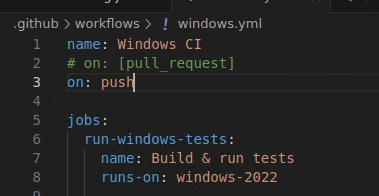User: "Let me get a runner installed!"
(time passes)
Me: (after noticing that has finally registered a runner) "Uh… That runner you registered isn't going to be usable with the pipeline I created for you. You configured the runner to only run tagged jobs. Further, you also configured it to only run jobs with a specific tag. The pipeline I created for you doesn't have any tagged jobs, let alone the one you allowed your runner to handle: your runner isn't going to be able to run any part of the pipeline."
#DevRants
#ITrants
